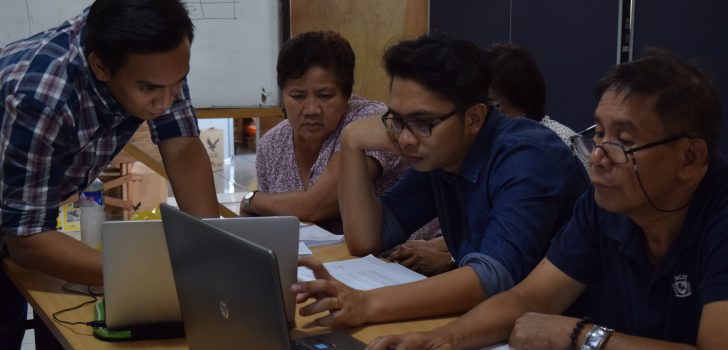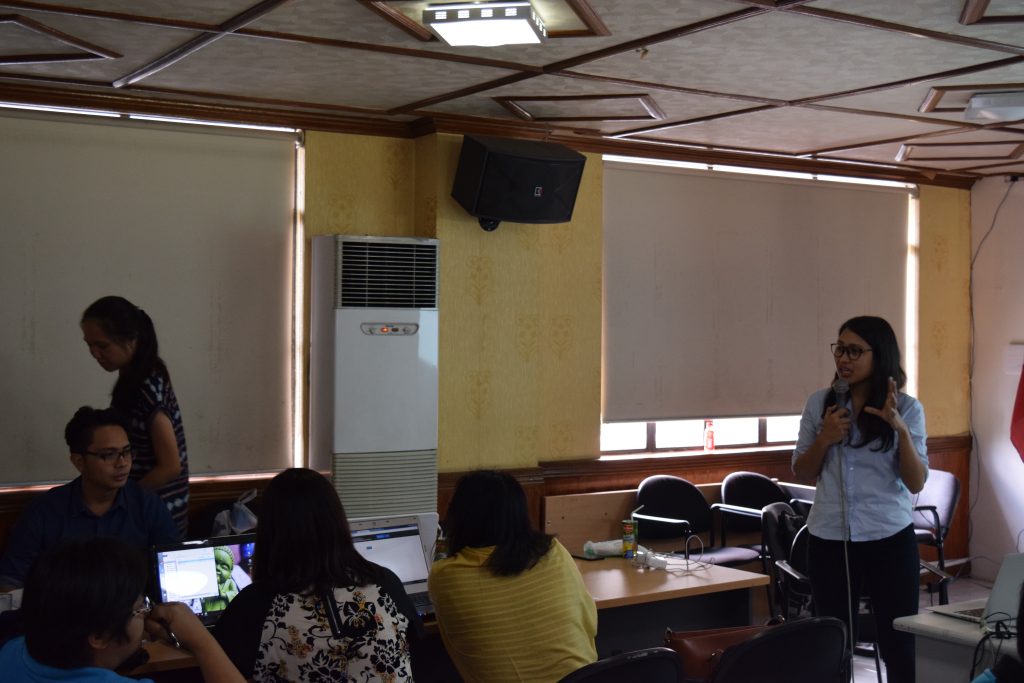 PRDP South Luzon PSO M&E Officer Arvin San Juan and CALABARZON RPCO Planning Officer Kevin Calubayan help participants from the Province of Cavite in encoding projects using their CIP.
PRDP South Luzon PSO M&E Officer Arvin San Juan and CALABARZON RPCO Planning Officer Kevin Calubayan help participants from the Province of Cavite in encoding projects using their CIP. PRDP introduces new web-based system, monitors mainstreaming of commodity investment plans
Aside from the infrastructures built and enterprises established, another legacy that the Philippine Rural Development Project (PRDP) aims to create is the mainstreaming of its tools and processes.
For the national and local level planning (I-PLAN) component, its contribution to make the Department of Agriculture’s (DA’s) bureaucracy more efficient is the science-based revised Agricultural and Fisheries Modernization Plan (AFMP) through the Value Chain Analysis (VCA) of different priority commodities in each locality.
The VCA is also used by the local government units (LGUs) as a tool in crafting their own Commodity Investment Plans (CIPs). While the CIPs are expected outputs of the LGUs from their partnership with PRDP, the plans can also be used to attract additional investments from other government agencies, civic groups, and private investors.
To help PRDP track the mainstreaming of CIPs in CALABARZON Region, the Monitoring and Evaluation Unit (M&E) and the I-PLAN component on April 26 held an encoding session and training on the use of web-based monitoring and evaluation system for the LGU-CIP implementation.
“The Department wants to see how the provinces use the investment plans not only in PRDP, but also in other investment sources. High usage of the CIPs means the success of the project for this particular area,” South Luzon Project Support Office (PSO) M&E Officer Arvin San Juan said.
San Juan also shared that the Project hopes to establish a more solid, science-based, and sound foundation for future projects that will be funded by the DA.
The module introduced to the participants from the different provinces in the region was intended for the project interventions identified in the CIPs, but were funded by other funding institutions aside from PRDP. “It will provide the LGUs with a separate space in the Project’s website,” he added.
“We are glad that we have this kind of training. As of today, only the PRDP lets us experience this,” Cavite Provincial Planning Officer II Lourdes Janohan said during the training, which was also facilitated by the National Project Coordination Office (NPCO) M&E Specialist Marilyn Platero. The Cavite LGU already practices using their CIP in identifying possible projects for their priority commodities.
One of the interventions in the CIP for coffee that was funded by another agency is the provision of planting materials, which was funded by the High Value Crops Development Program. The provincial LGU also funded the farm-to-market road and bridge projects in Alfonso, Cavite, which is the center of coffee production in the province.
Janohan added that their CIP now also serves as the basis for Cavite’s annual investment plan. With the said module, the province will also be able to showcase how they mainstream their CIPs.
“Our goal is to develop a similar system that can be used for all activities implemented by and in the province,” Janohan said.
The web-based monitoring and evaluation system training was conducted simultaneously in the regions covered by the South Luzon PSO. ### (Lawrence Albert Bariring, CALABARZON RPCO InfoACE Unit)

